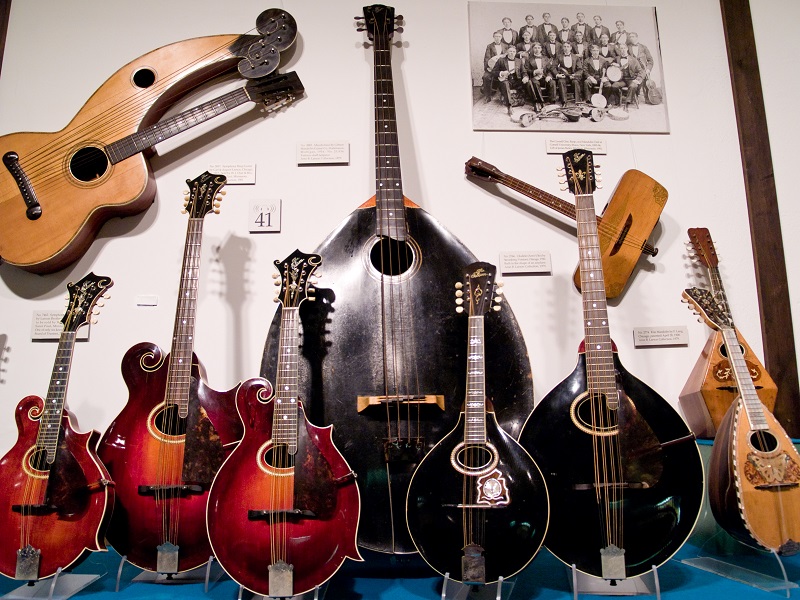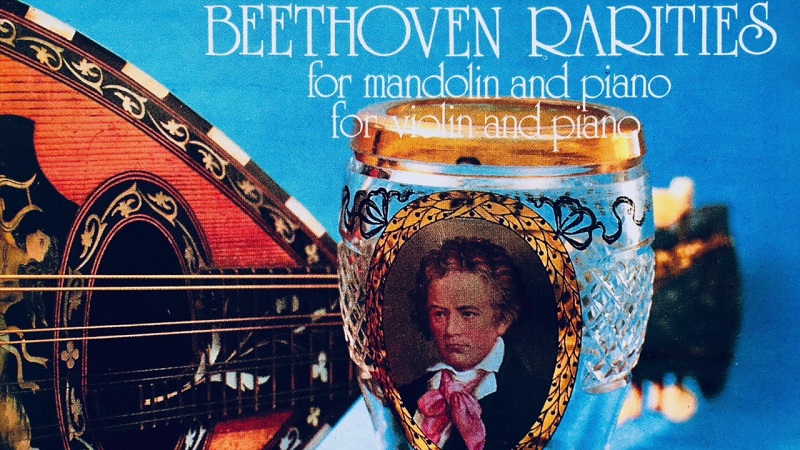Table of Contents
Great Mandolin Facts To Get You Started With This Instrument!
Most people are unaware of mandolins, which are string instruments. An instrument with a shorter neck is often described as a smaller version of a luth. Mandolins usually have eight strings that you strike to produce sound.
Its inclusion in diverse music genres has rapidly increased the instrument’s popularity despite its relative ambiguity.
We’re about to reveal a lot more about the mandolin! Our aim in today’s article is to help you get started with this instrument by providing you with 20 helpful and interesting facts about the mandolin!
1. Mandolins Have Prehistoric Roots
Ancient cave paintings in France show men playing single-stringed instruments thousands of years ago, which are the earliest ancestors of the mandolin.
Throughout history, stringed musical instruments have developed a lot, which led to the development of the modern-day mandolin in the 16th century in Naples, Italy.

Known as one of history’s most famous luthiers and appointed instrument-maker to the Queen of Italy at the time, Pasquale Vinaccia developed the mandolin from the lute.
A mandolin is built around a body and neck, like many string instruments.
2. Mandolins are a Large Family
There are many types of mandolin, but not all of them are created equal. Instead of being considered a standalone instrument, mandolins belong to a family of related instruments. The soprano is the key classification of the standard mandolin.

In addition, there are sopranino mandolins with a higher pitch. There’s also the octave mandolin, the mandocello, the mandolone, and the mandobass in the mandolin family.
3. Mandolins Come in Many Different Types
In addition to having numerous varieties of family members, the mandolin also comes in various types. Round-backed mandolins, flat-backed mandolins, and mandolins with carved tops are the most prominent varieties.
Mandolins with flat backs have thin wood sheets as the back like standard guitars, while other versions have curved wood strips to create a deeper bowl shape.
4. Many Great Musicians Used to Play Mandolin
Since its invention in the 1500s, many big names in classical music have experimented with the mandolin.
Ludwig van Beethoven is among the most notable names here. In spite of being mostly known as a pianist, the composer also enjoyed playing the mandolin and had his own mandolin near his piano. The mandolin was used by Beethoven in several pieces, of which only four have survived.

Beethoven was not the only classical composer to use the mandolin. Antonio Vivaldi, Wolfgang Amadeus Mozart, and Johann Nepomuk Hummel were also known for their use of the mandolin.
Many modern composers have played the mandolin, including Arnold Schoenberg, Anton Webern, and Igor Stravinsky.
Aside from that, the list of famous mandolinists includes some of the most famous musicians in history. These include Dave Apollon, Carlo Aonzo, Chris Thile, James ‘Yank’ Rachell, Bill Monroe, David Grisman, and Jacob do Bandolim.
5. A Mandolin is Made Up of Lots of Parts
Knowing the mandolin’s parts is one of the most important parts of learning it. An ideal mandolin has a wood body, usually made from spruce or cedar because its sheets are easy to work with and are hardy and durable.
Other than the wooden body, this instrument has other parts, such as the soundholes, fingerboard, headstock, and tuners.
6. Mandolins are Built Differently in Each Region
There are a number of different types of mandolin, and even slight variations between the same type. Brescian and Cremonese mandolins, for example, are tuned to the fifth, while Milanese, Sicilian, and Lombard mandolins are tuned to the fourth.
Besides that, the first group also has 4 strings, while the second has 6. Compared to Genoa mandolins, which have up to 12 strings! Still, the most common mandolins are those that originated in Naples, which have eight strings.
7. Different Designs for Different Genres
In addition to each of the above mandolins having a unique purpose, they can also be used in a completely different genre as well.
European classical and traditional music use Neapolitan mandolins, whereas American folk and bluegrass music use carved top mandolins. British and Irish music, as well as Brazilian music, mostly uses flat-back mandolins.
8. Mandolin Top Part
The top part of the mandolin is considered to be one of the most important parts of the instrument. It is called the soundboard for a reason.

As a result of the use of four courses of metal strings on the modern mandolin, a louder and more resonant sound is produced.
9. The Pressure
The metal strings can put a great deal of pressure on the instrument. As a result, the modern soundboard is designed and is able to withstand pressure.
10. World-wide, There are Many Similar Instruments to Mandolin
While the mandolin is pretty unique in terms of tuning, there are many similar string instruments around the world.
In this category are the Greek Bouzouki, Russian balalaika, Arab dambrua, Brazilian Bandolim, and Puerto Rican Cuatro.
11. The First Instrument Gibson Made was a Mandolin
Orville Gibson founded Gibson in 1902, making it one of the world’s largest music instrument manufacturers.
Gibson’s founder, however, built many musical instruments himself before the company was founded. Gibson built his first stringed instrument in 1894, a unique mandolin that was more durable than all his competitors.

Even today, Gibson continues to make world-class mandolins, and the Loar-signed F-5 model is among the most valuable instruments in Gibson’s collection and in those of other manufacturers.
12. The Founders of Many Mandolin Orchestras Were Salesmen
In the United States, the mandolin is fairly popular in classical and folk music. Although mandolin orchestras are found all over the country, their origins are unique.
Italian immigrants introduced the mandolin to the United States first, but not many Americans knew about it.
A number of mandolin makers hired traveling salesmen to set up mandolin orchestras in cities and small towns to increase public interest in their instruments. As a result of this sales strategy, more and more musicians started buying mandolins, and some of these orchestra groups are still active today!
13. Getting Started on the Mandolin isn’t Difficult
A mandolin can be the perfect instrument for beginners who are looking for an easy instrument.
Besides being relatively easy to learn, the instrument is also extremely versatile. It’s also relatively compact and accessible, making it an excellent entry-level instrument.
14. Mandolins aren’t That Expensive
Mandolins are relatively affordable, which makes them a great choice for beginners. An entry-level mandolin can cost you as little as $80 to $100!
It doesn’t mean they’re cheap, though. Some of them can cost a few thousand dollars.
15. There are Also Electric Mandolins Available
It is important to note that in addition to the standard acoustic mandolin, there are electric mandolins available as well.

The mandolin-shaped electric musical instrument is designed and tuned in order to play like a mandolin. As an electric mandolin relies on amplification, it has adopted a design similar to flat-back mandolins in place of the carved top and round-backed mandolins.
16. The Mandolin of Bill Monroe had a Snake Tail Inside it!
It is well known that there are certain musicians who possess the weirdest habits and traits. “Bill Monroe” was one of the most bizarre artists in this regard.
He is known to have kept a rattlesnake tail inside the body of his mandolin. By doing so, he kept rats and other critters from entering the mandolin, as well as absorbing moisture and extending its life and quality.

17. Mandolins were featured in a number of modern music pieces
Today, many famous songs and musical scores feature the mandolin, much to the surprise of many people.
There are many genres associated with the instrument, including classical, ethnic, jazz, country, and bluegrass. A popular song featuring the mandolin from the 1980s was “Mandolin Rain” by Bruce Hornsby and the Range.
Bluegrass and jazz aren’t the only genres in which mandolin tunes can be heard. There are also rock hits that feature mandolin tunes. Some of them are “Please, Please, Please Let Me Get What I Want (by The Smiths) played by Johnny Marr, “Maggie May” (by Rod Stewart) played by Ray Jackson, “The Battle of Evermore” (by Led Zeppelin) played by Jimmy Page.
18. Germany Joins
German working-class citizens also began to enjoy Italian canzonas, and this led to a strong desire to re-establish their cultural identity. It was the mandolin, once considered a high-class instrument, that was adopted by the “little man”.
There were shortly afterward mandolin orchestras in many major German cities, performed plucked arrangements of mainstream classical music.
19. Competition is Heating up
A national competition for mandolin soloists, quartets, and orchestras was held in Genoa in 1892 on the occasion of the four-hundredth anniversary of Christopher Columbus’ discovery of the New World.
Many mandolinists experienced a “mass awakening” after attending the event, which showcased their instruments’ full potential.
20. Pressed Archtops
The traditional archtop guitar is made of solid wood that has been carved into the desired shape. In addition to laminated wood sheets, solid wood sheets are available pressed into arched shapes.
These instruments are becoming increasingly common in the world of internationally produced musical instruments in the 21st century.
Despite their similar appearance and sound, pressed-top instruments don’t have the same quality as carved-wood instruments.
As long as the thickness is correct, consumers expect a particular type of sound from carved wood tops. Without proper carving, they can produce a dull sound. Because they’ve been playing longer, older carved-wood instruments sound better.
Happy Strumming!







